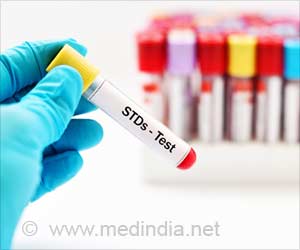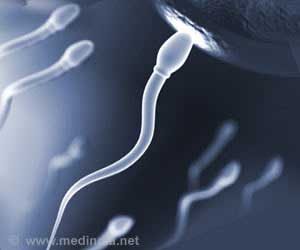Researchers have found the presence of distinctive brain blood flow patterns in premenopausal women who are uninterested in sex when they are watching explicit videos.

Up to 20 percent of women may have this form of sexual dysfunction, called hypoactive sexual desire disorder, for which there are no proven therapies, said Dr. Michael P. Diamond, Chairman of the Department of Obstetrics and Gynecology at the Medical College of Georgia at Georgia Regents University.
Researchers hope that a clearer understanding of physiological differences in these women will provide novel therapy targets as well as a method to objectively assess therapies, said Diamond, the study's senior author.
"There are site-specific alterations in blood flow in the brains of individuals with hypoactive sexual disorders versus those with normal sexual function," Diamond said. "This tells me there is a physiologic means of assessing hypoactive sexual desire and that as we move forward with therapeutics, whether it's counseling or medications, we can look to see whether changes occur in those regions."
Viagra, developed in the 1990s as way to increase the heart rate of sick babies, was approved by the Food and Drug Administration in 1998 to also treat male impotence, a major cause of sexual dysfunction. While several more options for men have been developed since, no FDA-approved options are available for women experiencing hypoactive sexual desire, Diamond said. He notes that a possible critical flaw in developing and evaluating therapies for women may be the inability to objectively measure results, other than with a woman's self-reporting of its impact on sexual activity.
Years ago, Diamond, a reproductive endocrinologist, became frustrated by the inability to help these women. In fact, many women did not bother discussing the issue with their physicians, possibly because it's an awkward problem with no clear solutions, he said.
While still at Wayne State University, he and his colleagues began looking for objective measures of a woman's sexual response, identifying sexually explicit film clips, then using functional magnetic resonance imaging, which measures real-time brain activation in response to a stimulus, to look at responses.
Their latest study links acquired hypoactive sexual desire disorder to a distinct pattern of blood flow in the brain, with significant activation of cortical structures involved in attention and reflection about emotion and mental state. Researchers noted that paying more attention to response to sexual stimuli already is implicated in sexual dysfunction. They also note activation of the anterior cingulate gyrus, an area involved in a broad range of emotions including homeostasis, pain, depression, and apathy. Another key area was the amygdala, which has a central role in processing emotion, learning, and memory.
Women with normal sexual function showed significantly greater activation of areas such as the right thalamus - a sort of relay station for handling sensory and motor input – that also plays a role in sexual arousal. They also experienced activation of the parahippocampal gyrus, involved in making and recalling memories. Interestingly, this area has been found to be more significantly activated in women with surgical menopause receiving hormone therapy.
Diamond notes that the official diagnosis of the sexual disorder requires distress regarding persistent disinterest in sex. Study participants were heterosexual, in stable relationships and had previously viewed sexually explicit images. Those with sexual dysfunction had a mean age of 37 versus 29 in the control group. Part of assessing blood flow patterns included also measuring baseline responses to neutral videos.
Next steps include taking these measurements in a larger number of women and beginning to use brain blood flow patterns to assess therapies, Diamond said.
Source-Eurekalert















